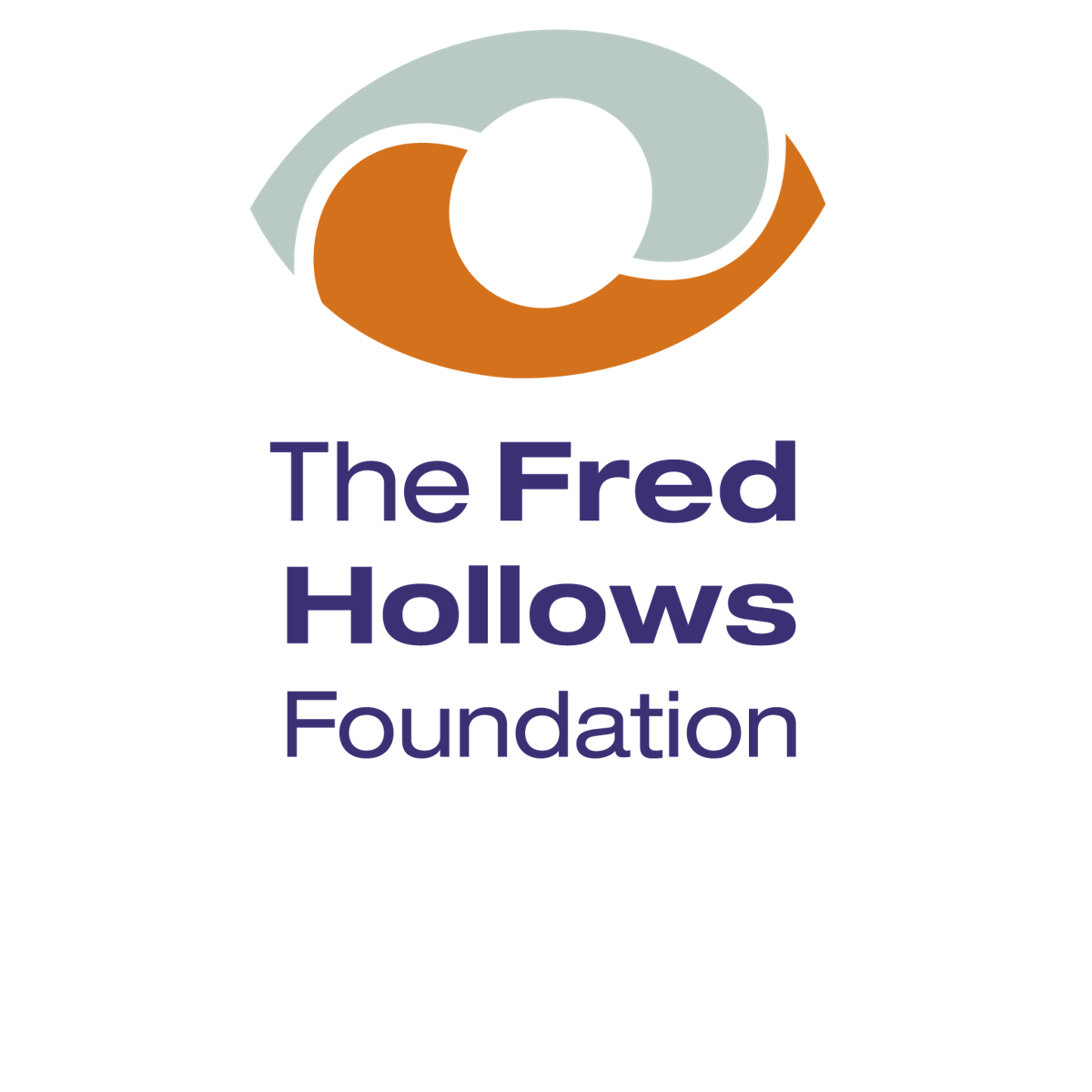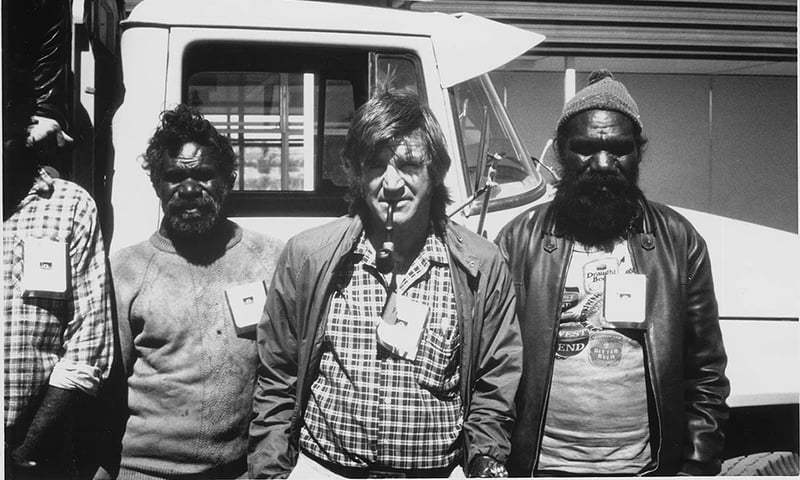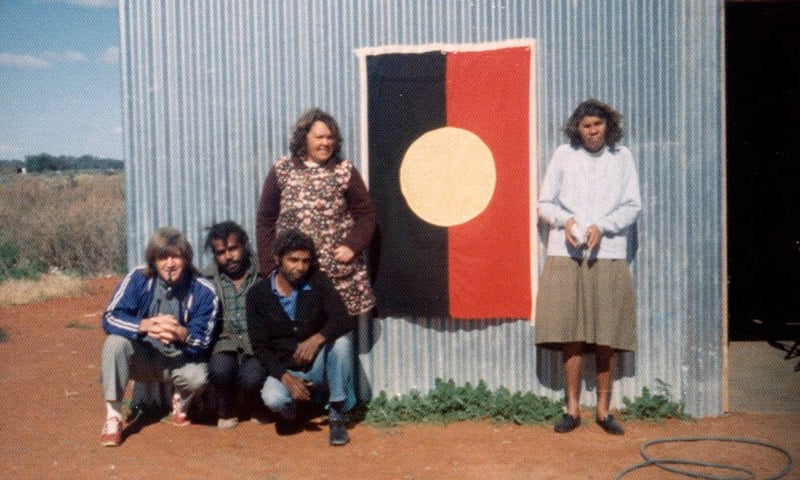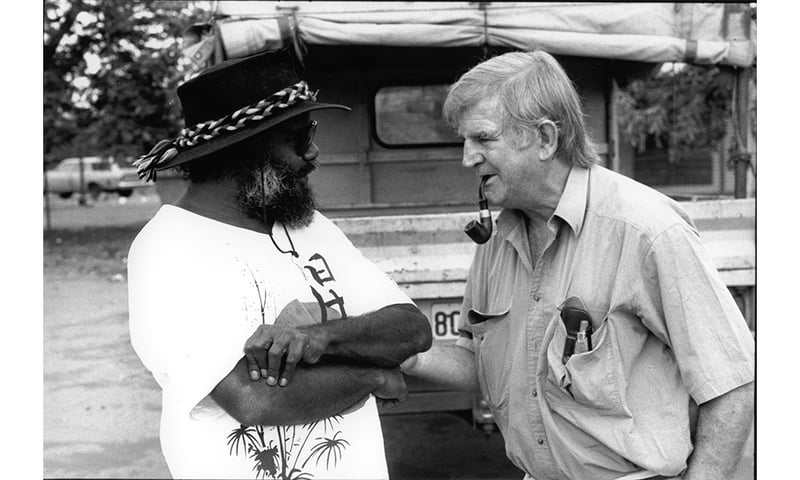Celebrating Dr. Nour on International Women’s Day
Blackwoods has proudly partnered with The Fred Hollows Foundation since 2010, donating 10% of profits from PROSAFE eyewear sales to the Indigenous...
3 min read
 The Fred Hollows Foundation
:
16 March 2022
The Fred Hollows Foundation
:
16 March 2022
Fred Hollows wanted equal eye health opportunities for Aboriginal and Torres Strait Islander Peoples. He wanted Australians to take notice of the appalling living conditions and the lack of access to basic health care and sanitation Indigenous Peoples were experiencing, right here in Australia. That’s why, over the course of two years, Fred and his team undertook a momentous and vital task: the National Trachoma and Eye Health Program.
Below is a breakdown of Fred’s journey down the path of social activism. It shows how caring for people’s eye health led this outspoken eye doctor to becoming an iconic Australian, who is revered around the world as a humanitarian and advocate for equal opportunity for all.
In the mid ‘60s Fred met author Frank Hardy and joined the Save the Gurindji committee, which consisted of activists who were supporting Aboriginal pastoral workers on strike at Wave Hill Station in the Northern Territory.
In the late ’60s, while Fred was working at the Prince of Wales Hospital he was asked to examine two Aboriginal elders from Wattie Creek (Dagurugu) in the Northern Territory. Fred noticed that they had eye problems he had never seen before – eye problems like trachoma, which most doctors at the time thought were exclusive to Africa having not encountered them in Australia for decades.
Fred grew concerned by his findings, and he visited the two elders in Wattie Creek to determine the eye health status of their entire community. When Fred started examining the people there, he was shocked at the prevalence of blinding cataract and trachoma in men, women, and children. There he met Vincent Lingiari, the Aboriginal activist who led the Wave Hill Walk Off. He later operated on Vincent’s eyes.

When Fred returned to Sydney, he was asked by the Redfern Aboriginal Legal Service to join their meeting. The Aboriginal Legal Service was swamped by Aboriginal and Torres Strait Islander Peoples who had medical problems because at the time:
Fred’s meeting with the Redfern Aboriginal Legal Service led to Aboriginal and Torres Strait Islander Peoples, together with non-Indigenous people, reaching a consensus that an Aboriginal Medical Centre was needed:
In 1975 Fred and some health department workers approached the Australian Government for funding, and formed the National Trachoma and Eye Health Program with the $1.4 million they were provided. The aim of the program was to:
The Royal Australian and New Zealand College of Ophthalmologists’ National Trachoma and Eye Health Program involved Fred, Gabi, and many specialist teams travelling all around Australia.
They travelled to remote and rural areas that didn’t have good access to eye health services, and they examined and treated more than 100,000 Aboriginal and Torres Strait Islander Peoples as possible.
Key to the success of the program was the involvement and leadership of Indigenous health workers and representatives who travelled with the team and worked tirelessly to help bring eye health care to many people in need. The key workers included Jilipia Jones, Gordon Briscoe, Trevor Buzzacott, Rose Murray, Reg Murray.
The National Trachoma Program was a huge success and over the course of the next two years, the team:

The National Trachoma Program’s success was thanks to local community involvement. The medical team sought the local knowledge and expertise of an Indigneous liaison officer to visit Aboriginal communities and talk them through the program, and address any of their questions or concerns to make sure they were comfortable and at ease about receiving treatment.
As part of carrying on Fred’s vision, one of driving principles for The Fred Hollows Foundation is to end avoidable blindness and improve the health of Aboriginal and Torres Strait Islander Peoples through our Indigenous Australia Program.
Our Indigenous Australia Program was established in 1999 and is run by a dedicated team of Aboriginal and Torres Strait Islander and non-Indigenous staff who work to improve access to eye health services for Aboriginal and Torres Strait Islander Peoples across Australia.
Why is there a need for the Indigenous Australia Program?

Since 2006, Australia’s peak health bodies, NGOs and human rights organisations have worked together to achieve health and life expectancy equity/parity for Australia’s Indigenous population. This campaign is called Close the Gap.
The Fred Hollows Foundation works to Close the Gap to:
.png)
Blackwoods has proudly partnered with The Fred Hollows Foundation since 2010, donating 10% of profits from PROSAFE eyewear sales to the Indigenous...